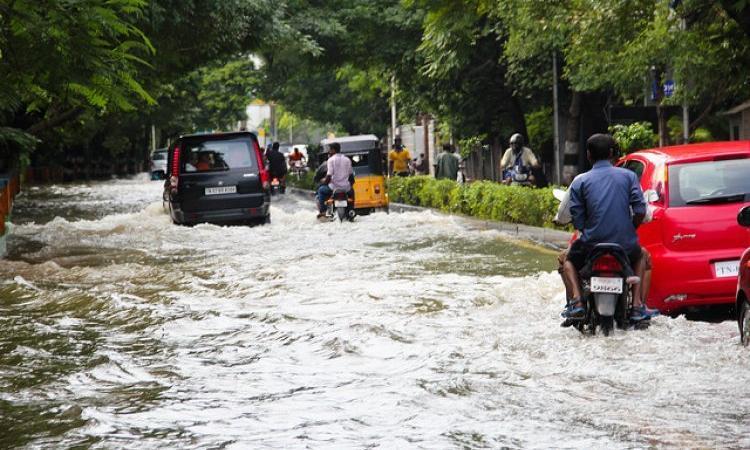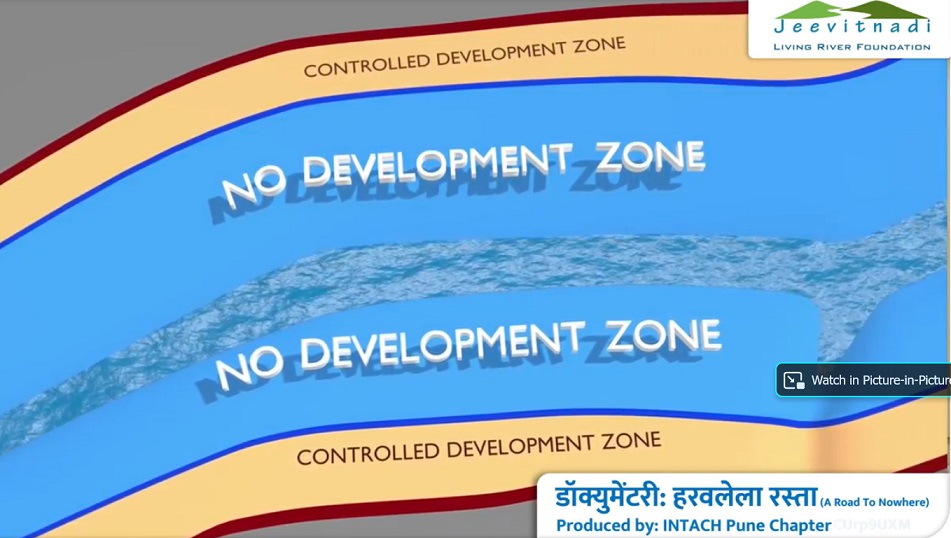
What are floods, why do we have floods at all? Jeevitnadi Living River Foundation, in this second video Part 2: Understanding floods released on 25th June 2021 from the series on 'Everything about floods', highlights the need to understand floods better and focuses on the current faulty models of development that serve to worsen the impact of floods.
Watch the second video Part 2: Understanding floods by Jeevitnadi in Marathi here:
While floods are an essential component of the river ecosystem and its health and play an important role in supporting communities that depend on the river and floods for their livelihoods, they can unleash great suffering and cause destruction to lives and property, when they strike.
Understanding floods to deal with them
Can understanding and knowing more about floods help us in dealing with them in a better way? For this, it is important to understand the river beyond its source to the different flows of the river and her journey from flow to floods and the factors that affect her as she traces her journey from the mountains to the sea.
When rainwater falls on the ground in the catchment areas, it gets transferred to the stream and river channels through a number of different pathways. These include surface overland flow, through flow (through the soil ) and deeper groundwater flow. These flows lead to increase in the water content of the river and when the amount of water exceeds what the river can hold, it results in floods. But it is important to understand that human induced anthropogenic changes can worsen the impacts of floods wherever they occur along the path of the river.
Types of floods
Floods can be of different types depending on where they originate. For example, Fluvial or river floods can occur when rivers are filled beyond their capacity due to excessive rain or runoff from upstream or even due to heavy snow melt or ice jams. River floods of this type can erode river banks and cause risk to river-side homes and structures.
At the origin of the rivers in hilly areas, heavy rains in short time spans and cloudbursts can lead to flash floods and the water that rushes downstream with great force can be extremely destructive under circumstances where human induced anthropogenic changes like loss of vegetation, land use changes prevent percolation of water into the soil. Vegetation and the undulating terrain in the hilly areas can help control the force of the water that flows down. However, in absence of vegetation, the force of the water carries with it huge quantities of sand and silt thus leading to extremely destructive flash floods.
Pluvial floods or surface water floods are more common in urban areas. When they are no areas left in urbanised cities for water percolation, heavy rains can often lead to flooding where water tends to rush to drier areas causing huge losses to lives and property.
Storms and high tides can create high waves that lash coastal areas and prevent river waters from entering the sea leading to coastal floods.
Understanding floodlines, to predict floods!
It is important to understand the kind of floods we have in our area to deal with them. This is important to devise strategies to prevent floods from destroying lives and property. It is then also important to have an understanding of floodlines.

Floodlines are imaginary or artificial lines marked on the banks of a river indicating zones of potential flood threat along its banks. The blue line marks the maximum flood discharge of the river in an average of 25 years, while the red line is decided on the maximum water level reached possibly once in 100 years and is a warning signal. The prohibitive or no development zone is the area between the two blue lines on the opposite side of the river, while the restrictive or controlled development zone is the area between the blue line and red line.
It is expected that no constructions should happen on the no development zone and only limited development happens in the restricted development zone. If this boundary is crossed, then floods can become disasters and destroy anything that can get in their way like unauthorised constructions along the river banks.
In Pune city for example, the Pune Municipal Corporation has defined limits to identify the point at which the water levels in the river can be dangerous and potentially lead to disastrous situations. Rise of the water level in the Mula Mutha river at of 541.97 metres with release of 10,000 cusecs water from dam is defined as Level 1; water level at 544.55 metres with release of 200,000 cusecs of water from the dam is Level 2; water level at 545.90 metres with release of 40,000 cusecs of water is defined as Level 3 signifying danger level; while water level of 547.15 metres with release of 60,000 cusecs of water is defined as level 4 signifying extreme danger.
Managing floods by changing ourselves
We cant control floods, but can we prevent them from becoming disasters feared by all? While human interventions are to be blamed for turning floods into disasters in the first place, it is important to understand that it is we who need to think deeply about the current paradigms of development that we continue to follow without taking into consideration the water cycle and the river ecology.
It is we who can control the amount of water going as runoff and entering the river by allowing it to percolate into the soil, catch rainwater where it falls and store it for further use, prevent haphazard development of our cities, prevent destruction of trees around the river, think of sustainable solutions to harness and store water at local levels instead of relying on huge structures such as dams and allowing the river to flow freely without binding her and preventing infrastructural interventions on her banks.
The first episode on Floods, a boon or a bane can be viewed here
The third episode on Dams and floods can be viewed here